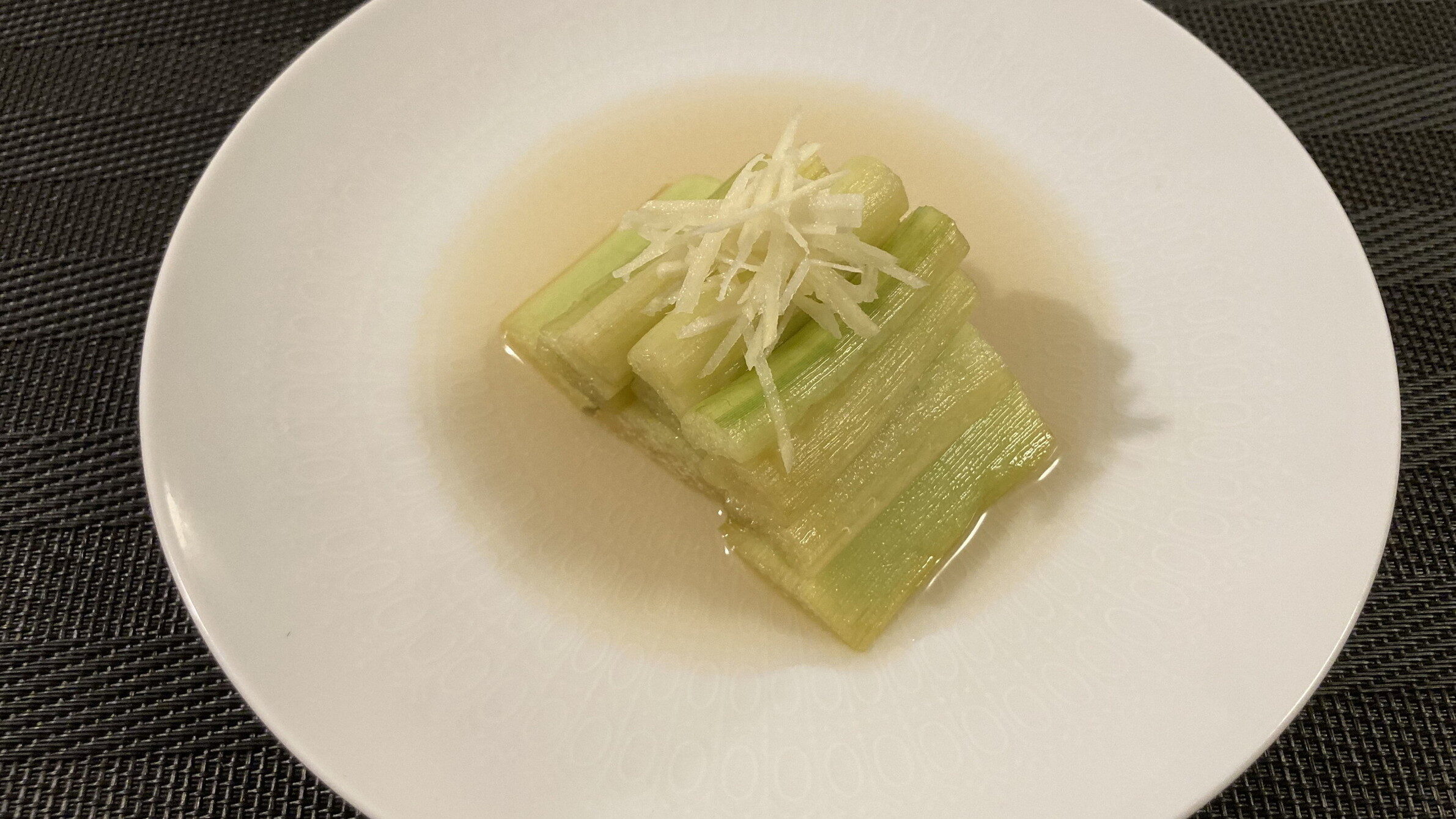
Alright, let’s cool down with a refreshing dish from Saga Prefecture: “Niimoji.” This is a simple yet delightful pickled dish made with “mizuimo,” a type of taro. It’s a local favorite, especially during the hot summer months!
Dish Name: Niimoji / にいもじ
- Region / Location: Saga Prefecture (throughout the prefecture).
- Primary Area of Tradition: Throughout Saga Prefecture.
- Main Ingredients: ミズイモ (Mizuimo).
How It’s Eaten / Served
“Niimoji” is made by peeling mizuimo and pickling it in a “nihai-zu” (vinegar with two ingredients) or “sanhai-zu” (vinegar with three ingredients) dressing. It’s a staple in Saga during the summer, enjoyed as a light and refreshing side dish.
Cultural Background and Preservation
Even though Saga Prefecture has a generally mild climate throughout the year, it gets quite hot in the summer, with temperatures reaching around 30 degrees Celsius (86 degrees Fahrenheit) daily. That’s where “Niimoji” comes in as a welcome relief from the heat.
Because it can be stored in the refrigerator for about a week, “Niimoji” is also a handy dish to have on hand. It’s served as a side dish for “Obon” (a Buddhist festival honoring ancestors) and when entertaining guests during festivals.
It’s typically served chilled to highlight the crisp texture of the mizuimo. While the standard is to keep it crisp, some people prefer to cook it until it’s a bit softer. The balance of sweet and sour flavors can also vary from household to household, giving everyone their own “home-style” Niimoji recipe.
Mizuimo, the star of “Niimoji,” is best enjoyed from July until the first frost. And since “Niimoji” is best served cold, it’s a popular choice for beating the summer heat. It’s often served as a side dish when entertaining guests during Obon and festivals.
To make “Niimoji,” mizuimo is peeled, cut into about 4cm lengths, and soaked in water to remove any harshness. A pickling liquid is made by simmering vinegar, sugar, and sliced red chili peppers in a pot. The mizuimo is then added and cooked briefly. It’s important not to overcook it, or it will lose its crisp texture. Finally, it’s garnished with thinly sliced ginger.
When using dried “zuiki” (taro stems), they’re rehydrated in water while rubbing them, soaked in vinegar, boiled, and then soaked in water before cooking.
You can find “Niimoji” not only in homes but also on the menu at restaurants throughout Saga Prefecture.
Additional information:
- Mizuimo (ミズイモ): A type of taro with a high water content and crisp texture.
- Nihai-zu (二杯酢): Vinegar dressing with two ingredients (usually vinegar and sugar).
- Sanhai-zu (三杯酢): Vinegar dressing with three ingredients (usually vinegar, sugar, and soy sauce).
- Zuiki (ずいき): Taro stems.
The information about regional cuisine featured on this website (Piggy's Grandma of Japan) is summarized and adapted from the Ministry of Agriculture, Forestry and Fisheries of Japan (MAFF) website, "Our Regional Cuisines"Additional commentary is provided based on the unique experiences and perspectives of the site's editors.
The copyright for the original content regarding regional cuisine belongs to the Ministry of Agriculture, Forestry and Fisheries of Japan.
The summaries and adaptations published on this site are intended for informational purposes only. Piggy's Grandma of Japan does not guarantee the accuracy or completeness of this information. For the most accurate and complete details, please refer to the original pages on the MAFF website.


